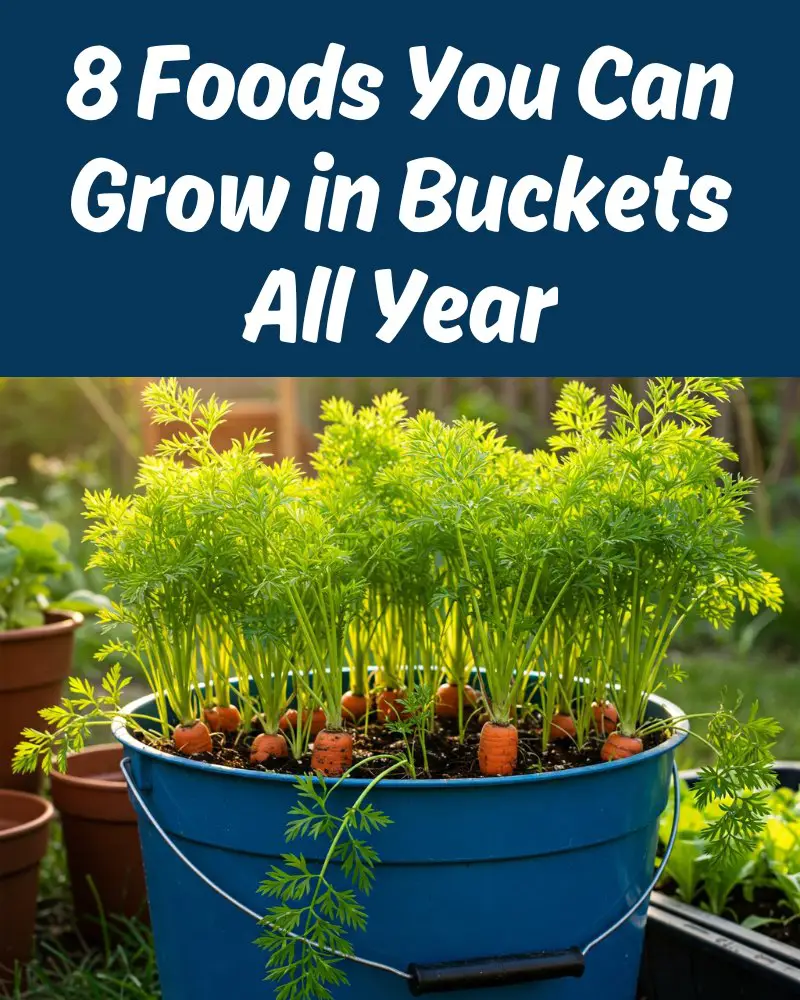Growing your own food is a rewarding endeavor, but limited space can often be a constraint. Fortunately, many vegetables and herbs thrive in containers, making it possible to cultivate a variety of edibles year-round, even in confined spaces. Utilizing buckets as planters is an efficient and cost-effective method to create a productive garden. Here are eight foods you can successfully grow in buckets throughout the year.
1. Leafy Greens
Leafy greens such as lettuce, spinach, and kale are ideal for bucket gardening. They have shallow root systems, allowing them to flourish in containers with a depth of 4 to 6 inches. These greens prefer cooler temperatures, making them suitable for year-round cultivation in many climates. Ensure they receive 3 to 5 hours of sunlight daily and maintain consistent soil moisture.
Wikipedia, the free encyclopedia
2. Herbs
Many herbs are well-suited for container gardening due to their compact size and adaptability. Herbs like basil, cilantro, thyme, mint, and marjoram thrive in buckets with a media depth of 4 to 6 inches. They require adequate sunlight and well-draining soil. Regular harvesting encourages bushier growth and prolongs the plant’s productivity.
Wikipedia, the free encyclopedia
3. Radishes
Radishes are fast-growing root vegetables that do well in containers. They need a media depth of 4 to 6 inches and can be harvested in as little as 3 to 4 weeks after planting. Radishes prefer cooler temperatures, making them suitable for multiple plantings throughout the year. Ensure the soil remains consistently moist to promote rapid growth and tender roots.
Wikipedia, the free encyclopedia
4. Carrots
Carrots can be grown in buckets, provided the containers are deep enough to accommodate their root length. A media depth of 8 to 12 inches is recommended. Choose shorter varieties if using shallower containers. Carrots thrive in loose, well-draining soil and require consistent moisture. They can be grown year-round in mild climates or with appropriate indoor conditions.
Wikipedia, the free encyclopedia
5. Peppers
Both sweet and hot peppers are suitable for bucket cultivation. They require a media depth of 8 to 12 inches and thrive in warm conditions with plenty of sunlight. Peppers prefer well-draining soil and benefit from regular feeding with a balanced fertilizer. In cooler climates, peppers can be grown indoors or in greenhouses to extend their growing season.
Wikipedia, the free encyclopedia
6. Tomatoes
Dwarf or determinate tomato varieties are ideal for container gardening. They need a media depth of 8 to 12 inches and support structures like stakes or cages to keep the plants upright. Tomatoes require 6 to 8 hours of direct sunlight and regular watering to prevent blossom end rot. Growing them in buckets allows for mobility to chase the sun or protect them from adverse weather.
Wikipedia, the free encyclopedia
7. Beans
Bush beans are well-suited for bucket gardening due to their compact growth habit. They require a media depth of 8 to 12 inches and prefer warm temperatures with full sun exposure. Beans enrich the soil by fixing nitrogen, benefiting subsequent plantings. Regular harvesting encourages continued production throughout the growing season.
Wikipedia, the free encyclopedia
8. Beets
Beets are versatile root vegetables that can be grown in containers with a media depth of 8 to 12 inches. Both the roots and greens are edible, providing a dual harvest. Beets prefer cool temperatures and can be planted in succession for a continuous yield. Maintain consistent soil moisture and ensure the soil is loose to allow for proper root development.
Wikipedia, the free encyclopedia
Tips for Successful Bucket Gardening:
- Container Selection: Ensure buckets have adequate drainage holes to prevent waterlogging. Dark-colored containers can absorb heat, which may affect plant roots, so consider using lighter-colored buckets or providing shade during peak heat. Wikipedia, the free encyclopedia
- Soil Mix: Use a light, porous growing medium. Commercial soilless mixes work well, and incorporating compost can enhance fertility. Avoid using heavy garden soil alone, as it may compact in containers. Wikipedia, the free encyclopedia
- Watering: Container plants often require more frequent watering than those in the ground. Monitor soil moisture regularly and water when the top inch feels dry. Be cautious not to overwater, as this can lead to root rot.
- Fertilization: Incorporate a slow-release fertilizer into the soil mix or apply a balanced liquid fertilizer periodically to supply essential nutrients. Follow the manufacturer’s recommendations to avoid over-fertilization.
- Sunlight Exposure: Place buckets in locations that provide the appropriate amount of sunlight for the specific crops. Warm-season crops like tomatoes and peppers need ample sunlight, while cool-season crops can tolerate partial shade.
By selecting suitable crops and providing proper care, bucket gardening can yield a bountiful harvest throughout the year, making it an excellent option for those with limited space or seeking to maximize their gardening potential.

